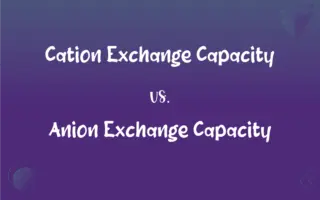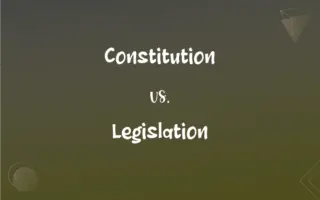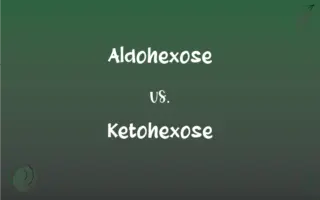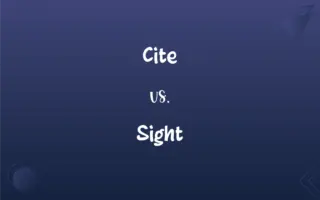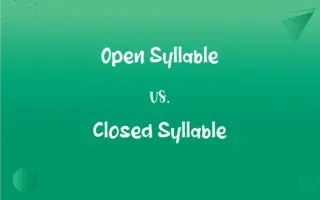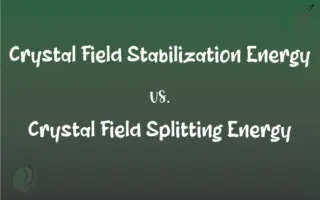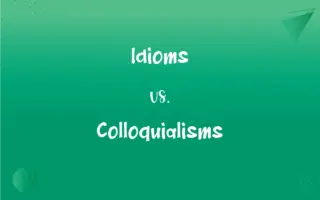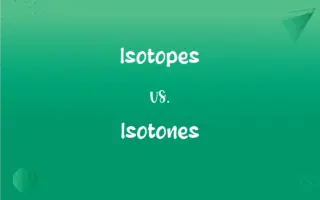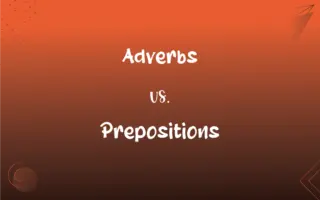Classical Theory vs. Neo Classical Theory: What's the Difference?
Edited by Aimie Carlson || By Janet White || Published on March 4, 2024
Classical theory focuses on free markets and labor productivity; neoclassical theory emphasizes utility, demand, and marginalism.

Key Differences
Classical theory, originating in the 18th and 19th centuries, emphasizes economic growth through capital accumulation and labor productivity, viewing the economy as self-regulating and markets as naturally finding equilibrium. Neoclassical theory, emerging in the late 19th century, shifts focus to individual utility, demand, and the marginal analysis of consumers and producers, introducing the concepts of marginal utility and costs.
Classical economists like Adam Smith and David Ricardo stressed the role of labor in value creation, whereas neoclassical theorists like Alfred Marshall and William Stanley Jevons centered on the subjective valuation of goods and services and their utility to individuals.
The classical theory's macroeconomic perspective contrasts with the neoclassical emphasis on microeconomic foundations, where individual choices and preferences drive market outcomes. Neoclassical theory incorporates mathematical modeling and equilibrium analysis to predict consumer and producer behavior, diverging from the classical reliance on natural laws and the labor theory of value.
Comparison Chart
Focus
Economic growth, capital accumulation, labor productivity
Utility, demand, marginal analysis
Key Concepts
Labor theory of value, self-regulating markets
Marginal utility, marginal costs, individual choices
ADVERTISEMENT
Founding Economists
Adam Smith, David Ricardo
Alfred Marshall, William Stanley Jevons
Analytical Approach
Macro-economic, holistic
Micro-economic, individualistic
Value Determination
Based on labor and production costs
Based on subjective utility and preferences
Classical Theory and Neo Classical Theory Definitions
Classical Theory
Believes in the long-term stability of economies.
Classical theory suggests that economies have inherent mechanisms that correct short-term imbalances.
Neo Classical Theory
Focuses on optimal allocation of resources.
Neoclassical theory seeks to understand how economies allocate scarce resources among competing uses.
ADVERTISEMENT
Classical Theory
Advocates for free markets and minimal government intervention.
Classical theory posits that economies thrive best under conditions of free trade and limited regulation.
Neo Classical Theory
Incorporates the marginal analysis of production and consumption.
Neoclassical theory analyzes decisions at the margin, considering the additional benefits and costs of economic choices.
Classical Theory
Focuses on the production side of the economy.
Classical economists analyze economic growth through the lens of capital accumulation and labor productivity.
Neo Classical Theory
Emphasizes equilibrium in markets through supply and demand.
According to neoclassical theory, prices adjust to equate supply and demand, ensuring market equilibrium.
Classical Theory
Views the economy as a self-regulating system.
Classical theory holds that supply and demand naturally balance out in a free market.
Neo Classical Theory
Centers on consumer utility and rational choice.
Neoclassical theory introduces the concept of marginal utility to explain consumer behavior.
Classical Theory
Emphasizes the role of labor in determining the value of goods.
According to classical theory, the price of a product is directly related to the labor required to produce it.
Neo Classical Theory
Uses mathematical models to analyze economic phenomena.
Neoclassical economists employ mathematical equations to predict market outcomes based on individual preferences.
FAQs
How do classical and neoclassical theories view market equilibrium?
Classical theory sees markets naturally reaching equilibrium, while neoclassical theory uses mathematical models to explain how individual choices lead to equilibrium.
How do these theories approach value determination?
Classical theory ties value to labor and production costs, whereas neoclassical theory bases value on subjective utility and individual preferences.
What is classical theory in economics?
Classical theory focuses on economic growth, capital, labor productivity, and the self-regulating nature of markets.
What defines neoclassical theory?
Neoclassical theory emphasizes individual utility, marginal analysis, and the equilibrium of supply and demand.
What role does government play in classical and neoclassical theories?
Both theories advocate for limited government intervention, but for different reasons: classical theory due to the natural self-regulation of markets, and neoclassical theory due to the efficient outcomes of individual choices.
Can classical and neoclassical theories be integrated?
While they have distinct approaches, elements of both theories can coexist in broader economic analyses.
What impact did classical theory have on later economic thought?
Classical theory laid the foundational concepts for economic analysis, influencing later theories including neoclassical economics.
How does neoclassical theory address market failures?
Neoclassical theory acknowledges market failures and analyzes conditions under which markets may not lead to efficient outcomes.
How do classical and neoclassical theories view labor and employment?
Classical theory ties the value of goods to labor, while neoclassical theory considers labor supply and demand in terms of utility and wages.
How do these theories address income distribution?
Classical theory discusses income distribution in terms of production factors, while neoclassical theory analyzes it through marginal productivity and market equilibrium.
What is the role of capital in classical and neoclassical theories?
In classical theory, capital accumulation is central to economic growth; in neoclassical theory, capital is analyzed in terms of its marginal productivity.
How do classical economists view technological progress?
Classical economists see technological progress as key to economic growth and productivity increases.
What is the significance of marginalism in neoclassical theory?
Marginalism is crucial for understanding how small changes in consumption or production levels affect decisions and market outcomes.
What methodologies are common in neoclassical theory?
Neoclassical theory often employs mathematical and statistical methods to model economic phenomena.
How has neoclassical theory evolved over time?
Neoclassical theory has incorporated more complex understandings of market behavior, information asymmetries, and non-rational decision-making.
How do these theories explain consumer behavior?
Classical theory largely overlooks individual consumer behavior, while neoclassical theory focuses on it, particularly through the lens of utility maximization.
What criticisms are directed towards classical theory?
Critics argue that classical theory's focus on production and labor value may oversimplify the complexities of market dynamics and value determination.
How does neoclassical theory inform public policy?
Neoclassical theory influences policy through its analyses of market efficiency, welfare economics, and the role of government in correcting market failures.
What criticisms are directed towards neoclassical theory?
Neoclassical theory is often critiqued for its assumptions of rational behavior and the oversimplification of human decision-making.
What is the relevance of classical theory in modern economics?
Classical theory's concepts of capital, growth, and market self-regulation continue to influence modern economic policies and thought.
About Author
Written by
Janet WhiteJanet White has been an esteemed writer and blogger for Difference Wiki. Holding a Master's degree in Science and Medical Journalism from the prestigious Boston University, she has consistently demonstrated her expertise and passion for her field. When she's not immersed in her work, Janet relishes her time exercising, delving into a good book, and cherishing moments with friends and family.
Edited by
Aimie CarlsonAimie Carlson, holding a master's degree in English literature, is a fervent English language enthusiast. She lends her writing talents to Difference Wiki, a prominent website that specializes in comparisons, offering readers insightful analyses that both captivate and inform.





